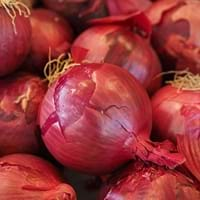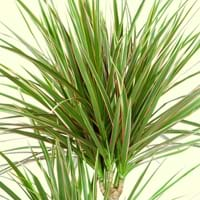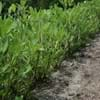Life Span
Perennial
Annual
Type
Vegetable
Tender Perennial
Origin
World/Pandemic, North America, Europe, Russia/Siberia, Northern Africa, Asia, India
Madagascar
Types
Not Available
Broadleaf evergreen
Number of Varieties
Not Available
Habitat
Cropland, Farms, gardens
Tropical areas
USDA Hardiness Zone
Not Available
10-12
AHS Heat Zone
Not Available
12-1
Sunset Zone
A1, A2, A3, H1, H2, 1a, 1b, 2a, 2b, 3a, 3b, 4, 5, 6, 7, 8, 9, 10, 11, 12, 13, 14, 15, 16, 17, 18, 19, 20, 21, 22, 23, 24
H2, 21, 23, 24
Habit
Upright/Erect
Upright/Erect
Flower Color
White, Yellow green
White
Flower Color Modifier
Bicolor
Bicolor
Fruit Color
Not Available
Yellow
Leaf Color in Spring
Not Available
Red, Olive, Gray Green
Leaf Color in Summer
Green, Gray Green
Red, Olive, Gray Green
Leaf Color in Fall
Green, Gray Green, Yellow green
Red, Olive, Gray Green
Leaf Color in Winter
Not Available
Light Green
Plant Season
Not Available
Spring, Summer, Fall, Winter
Sunlight
Full Sun, Partial Sun
Partial Sun, Partial shade
Type of Soil
Loam, Sand
Loam, Sand
The pH of Soil
Neutral
Acidic, Neutral, Alkaline
Soil Drainage
Well drained
Well drained
Bloom Time
Late Spring, Early Summer
Summer
Tolerances
Drought
Drought
Where to Plant?
Ground, Pot
Ground, Pot
How to Plant?
Seedlings, Sets
Cuttings, Seedlings
Plant Maintenance
Medium
Medium
Watering Requirements
Keep the ground moist but not water-logged, Requires a lot of watering, Water twice a day in the initial period
Water occasionally
In Summer
Lots of watering
Lots of watering
In Spring
Moderate
Moderate
In Winter
Average Water
Average Water
Soil pH
Neutral
Acidic, Neutral, Alkaline
Soil Type
Loam, Sand
Loam, Sand
Soil Drainage Capacity
Well drained
Well drained
Sun Exposure
Full Sun, Partial Sun
Partial Sun, Partial shade
Pruning
Remove damaged leaves, Remove dead branches, Remove dead leaves
Remove damaged leaves, Remove dead branches, Remove dead leaves
Fertilizers
All-Purpose Liquid Fertilizer
All-Purpose Liquid Fertilizer
Pests and Diseases
Red blotch
Red blotch
Plant Tolerance
Drought
Drought
Flower Petal Number
Single
Single
Fragrant Bark/Stem
Yes
No
Foliage Texture
Medium
Fine
Foliage Sheen
Matte
Glossy
Attracts
Not Available
Not Available
Allergy
no allergic reactions
Not Available
Aesthetic Uses
Not Used For Aesthetic Purpose
Showy Purposes
Beauty Benefits
Not Available
Not Available
Environmental Uses
Air purification
Air purification
Medicinal Uses
Asthma, Bronchitis, cholesterol-lowering, Cough, Diabetes, Digestion problems, Diuretic, High blood pressure
Headache, Healing, Sore Eyes
Part of Plant Used
Whole plant
Leaves
Other Uses
Culinary use
Air freshner, Showy Purposes
Used As Indoor Plant
Yes
Yes
Used As Outdoor Plant
Yes
Yes
Garden Design
Edible, Herb / Vegetable
Container, Feature Plant, Houseplant, Tropical
Botanical Name
ALLIUM cepa 'Burgundy'
DRACAENA marginata
Common Name
Garden Onion, Red Onion
Madagascar Dragon Tree
In Hindi
लाल प्याज
Dracaena marginata
In German
Rote Zwiebel
Dracaena marginata
In French
Oignon rouge
Dracaena marginata
In Spanish
Cebolla roja
Dracaena marginata
In Greek
Κόκκινο κρεμμύδι
Dracaena marginata
In Portuguese
Cebola vermelha
marginata do Dracaena
In Polish
Czerwona cebula
Dracena marginata
In Latin
Red Cepa
Dracaena marginata
Phylum
Magnoliophyta
Magnoliophyta
Class
Liliopsida
Liliopsida
Family
Liliaceae
Agavaceae
Clade
Angiosperms, Monocots
Angiosperms, Monocots
Tribe
Not Available
Not Available
Subfamily
Allioideae
Not Available
Number of Species
Not Available
Not Available
Properties of Red Onion and Dracaena Marginata
Wondering what are the properties of Red Onion and Dracaena Marginata? We provide you with everything About Red Onion and Dracaena Marginata. Red Onion doesn't have thorns and Dracaena Marginata doesn't have thorns. Also Red Onion does not have fragrant flowers. Red Onion has allergic reactions like no allergic reactions and Dracaena Marginata has allergic reactions like no allergic reactions. Compare all the properties and characteristics of these two plants. Find out which of these plant can be used as indoor plant. If you are interested to decorate your house and garden, find out aesthetic uses, compare them and select the plant which will beautify your surrounding. Along with beautification, try comparing medicinal and edible uses of Red Onion and Dracaena Marginata and you can choose the plant having best and most benefits.
Season and Care of Red Onion and Dracaena Marginata
Season and care of Red Onion and Dracaena Marginata is important to know. While considering everything about Red Onion and Dracaena Marginata Care, growing season is an essential factor. Red Onion season is Not Available and Dracaena Marginata season is Not Available. The type of soil for Red Onion is Loam, Sand and for Dracaena Marginata is Loam, Sand while the PH of soil for Red Onion is Neutral and for Dracaena Marginata is Acidic, Neutral, Alkaline.
Red Onion and Dracaena Marginata Physical Information
Red Onion and Dracaena Marginata physical information is very important for comparison. Red Onion height is 60.00 cm and width 10.20 cm whereas Dracaena Marginata height is 90.00 cm and width 90.00 cm. The color specification of Red Onion and Dracaena Marginata are as follows:
Red Onion flower color: White and Yellow green
Red Onion leaf color: Not Available
Dracaena Marginata flower color: White
- Dracaena Marginata leaf color: Red, Olive and Gray Green
Care of Red Onion and Dracaena Marginata
Care of Red Onion and Dracaena Marginata include pruning, fertilizers, watering etc. Red Onion pruning is done Remove damaged leaves, Remove dead branches and Remove dead leaves and Dracaena Marginata pruning is done Remove damaged leaves, Remove dead branches and Remove dead leaves. In summer Red Onion needs Lots of watering and in winter, it needs Average Water. Whereas, in summer Dracaena Marginata needs Lots of watering and in winter, it needs Average Water.





